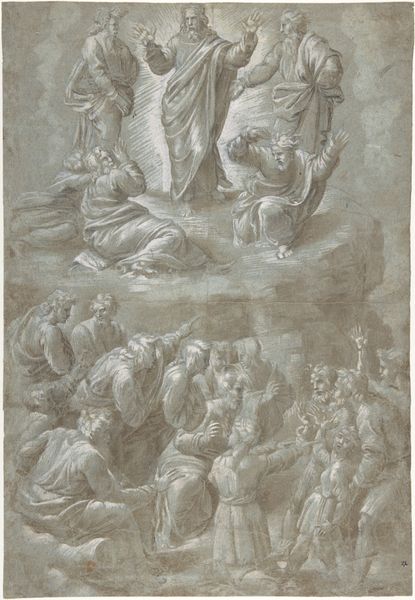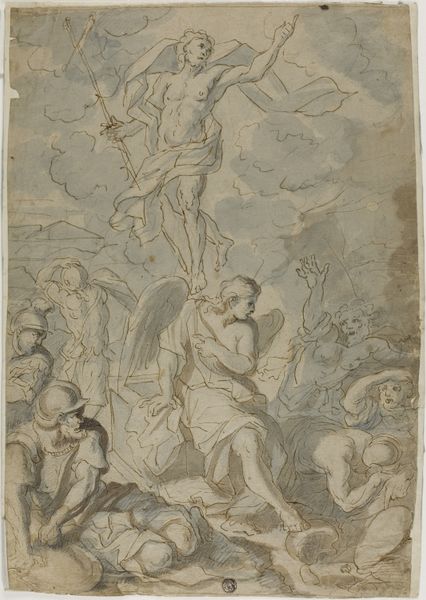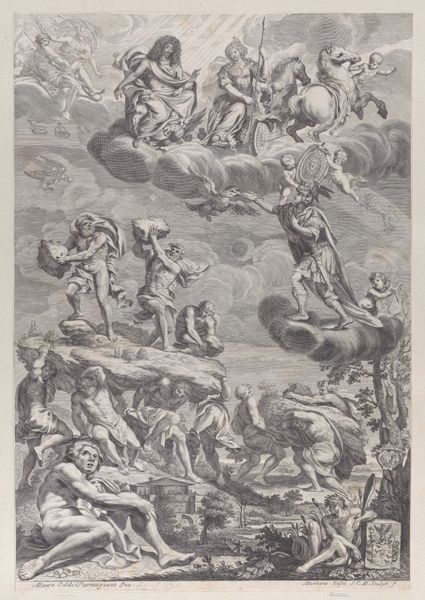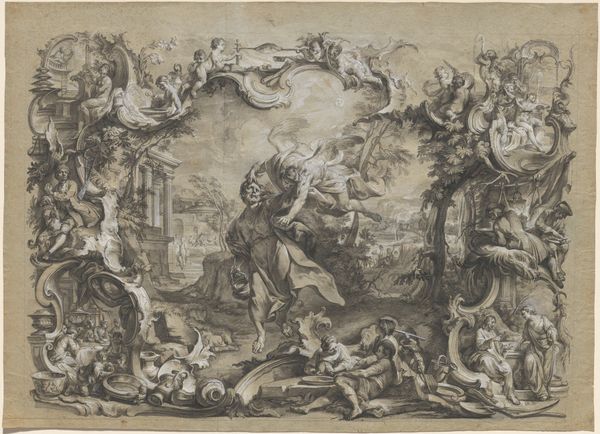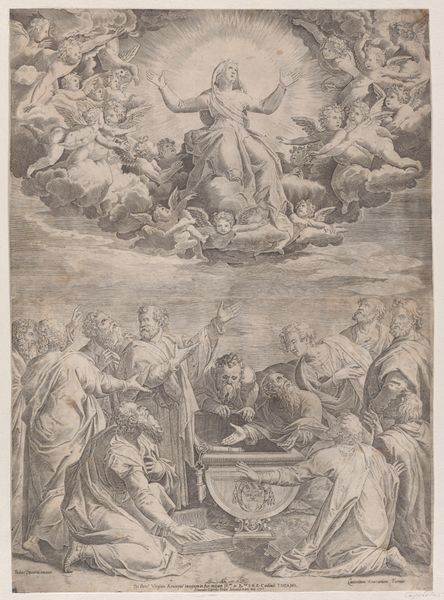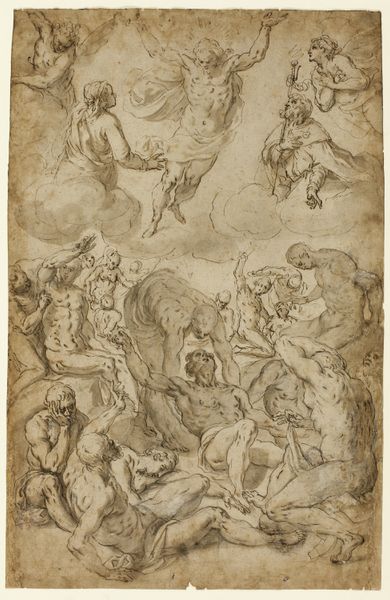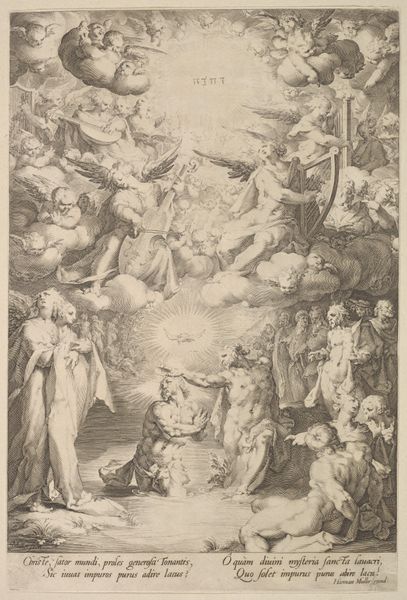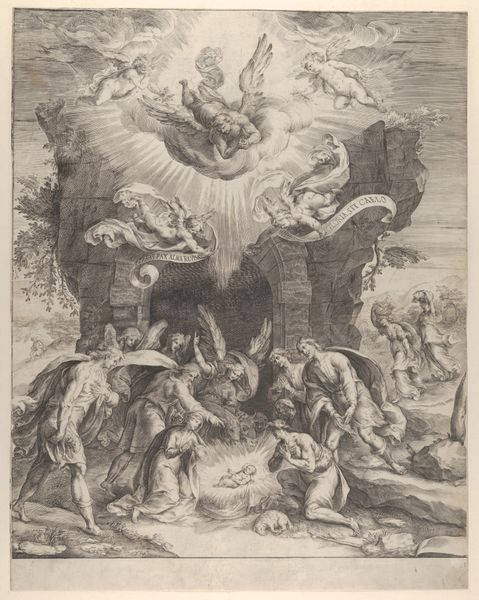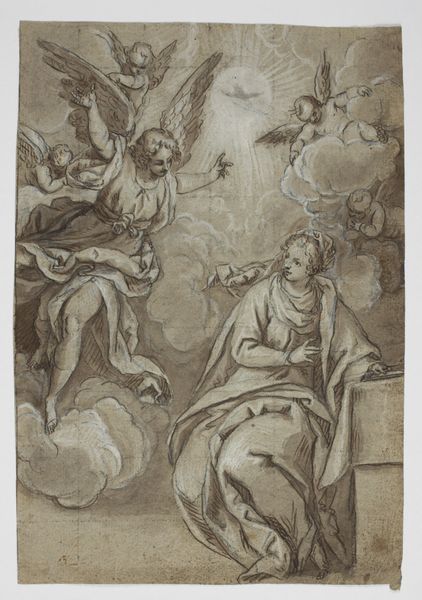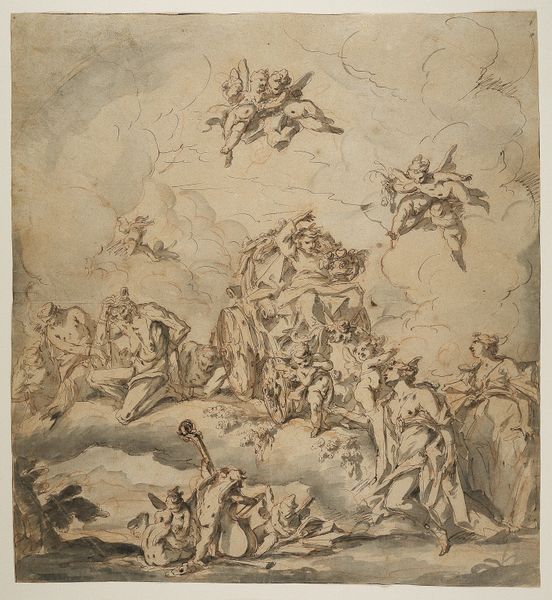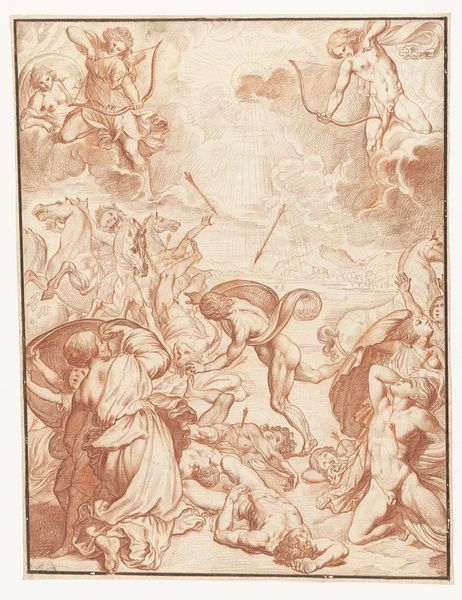
Flying Putti, Surrounding Archangel Raphael 1631 - 1632
0:00
0:00
drawing, print, oil-paint, ink, charcoal
#
drawing
#
allegory
#
baroque
#
ink painting
# print
#
oil-paint
#
charcoal drawing
#
figuration
#
oil painting
#
ink
#
charcoal
#
watercolor
Dimensions: sheet: 8 5/8 x 6 7/16 in. (21.9 x 16.3 cm)
Copyright: Public Domain
Curator: This captivating drawing, "Flying Putti, Surrounding Archangel Raphael," was created by Conrad Meyer around 1631 or 1632. It's currently held at the Metropolitan Museum of Art. What are your initial impressions? Editor: The density! It feels positively crowded with cherubs, creating this dizzying sense of celestial activity. All rendered in charcoal, ink and wash, giving a wonderfully smoky, almost dreamlike quality. One can almost smell the pigment! Curator: Indeed, the layered application of ink and wash builds a tangible depth. We can see the hand of the artist shaping form with delicate skill. Consider the economics of printmaking at the time; this was not just art, but a commodity. Meyer clearly invested craft labor in an image likely intended for wide circulation. Editor: Absolutely, and what strikes me is the enduring symbolism of the angel Raphael. Known as a healer and protector, his figure surrounded by playful putti speaks to comfort and guidance. Look how, despite the bustling cloudscape, his form exudes calm strength! It reflects a need for divine intervention perhaps. Curator: Good point. Given the possible commercial element, though, might this abundance of cherubic figures serve a purpose beyond mere aesthetic delight or even spirituality? Consider that a workshop producing these would have provided employment and contributed to local trade networks. The making of art becomes interwoven with socio-economic narratives. Editor: Perhaps. Though I think viewers at the time and now, respond to the overall symbolic density of the drawing. Each cherub, each gesture, adds to a powerful sense of Baroque emotionalism. The upraised arms of a winged child suggests perhaps aspiration, or supplication. It connects to something quite fundamental in the human psyche, really. Curator: A fundamental need for beautiful objects crafted through careful labor. We must acknowledge that these works, with their subject matter steeped in faith, nonetheless participated in circuits of material exchange. They functioned simultaneously as objects of devotion and items of commerce, reflecting societal values beyond mere iconography. Editor: So true, and what a reminder that imagery—no matter how divinely inspired—never exists in a vacuum. It interacts with individual hopes, with social realities and indeed, commercial ventures. Thank you for offering that. Curator: Thank you. Viewing this image in the context of the social and economic factors brings an additional layer of appreciation for its meaning.
Comments
No comments
Be the first to comment and join the conversation on the ultimate creative platform.
